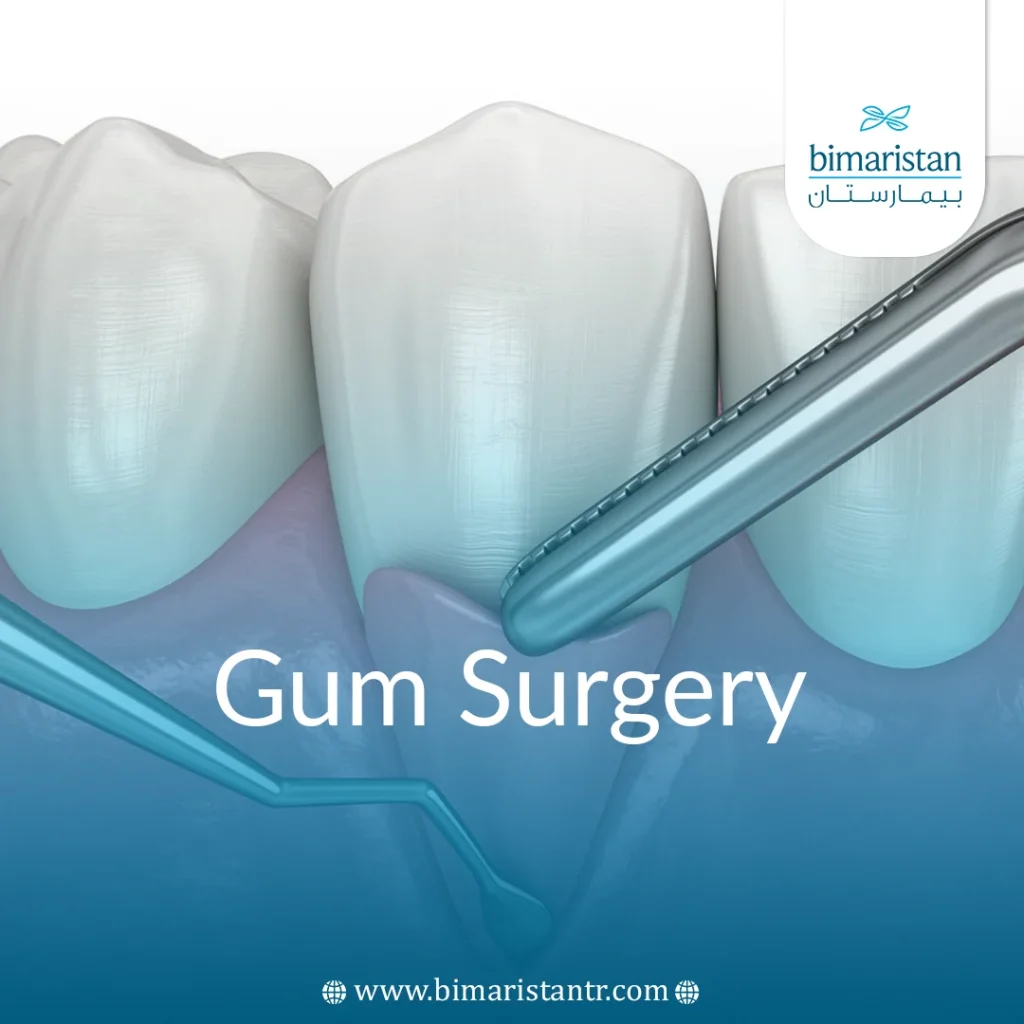In this article, we will learn about the types and stages of gum surgery in Turkey.
When you skip dentist office visits for too long, untreated gum disease can cause you to develop advanced gum disease that requires surgery. This type of surgery is known as periodontal surgery and is intended to beautify the gums and treat gum disease and any damage caused by gum disease:
- Regrowing damaged bones and tissues
- Preventing tooth loss
- Minimize gum gaps between teeth, known as black triangles
- Jawbone reshaping to minimize the risk of bacterial growth in bone crevices
- Eliminate bacteria and infections
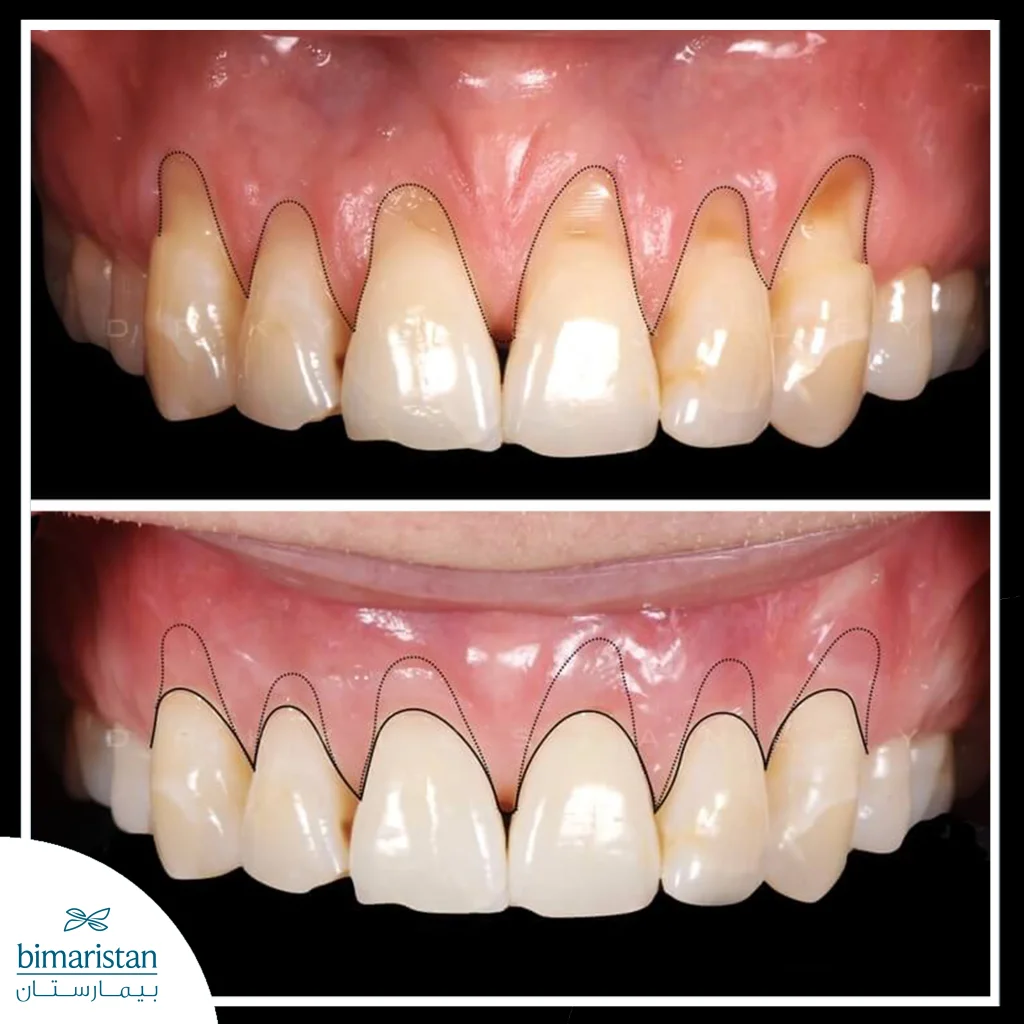
What conditions can gum surgery treat?
Some gum diseases, such as gingivitis and periodontitis, may require surgical treatment at some stage, including gingivectomy, to correct the positioning of the gums.
Periungual gingivitis is a mild form of gum disease in which the gums are red, swollen, and bleeding; gingivitis is most often caused by poor oral hygiene and the buildup of plaque and tartar.
Effective treatment under the supervision of a doctor can reverse the condition and result in healthy gums.
Periodontitis is a more serious form of gum disease in which gum inflammation worsens and progresses, leading to an inflammatory response that destroys bone and tissue.
During this inflammatory process, the inflamed gums begin to separate from the teeth, causing voids called pockets. These pockets trap bacteria and lead to infection, which can result in tooth loss and bone damage.
Some types of gum surgeries performed in Turkey
The type of oral and gum surgery performed by a dental surgeon depends on the pattern and severity of gum disease.
Before the surgery, the dental surgeon may perform a deep cleaning of the gums, known as deep scaling, which aims to remove tartar and bacteria from the teeth and gums.
Scaling and root debridement are performed at the same time, in addition to another procedure that removes tartar from the roots known as root debridement. This procedure smooths the surfaces of the tooth roots and reduces the buildup of tartar and bacteria.
Flap lift surgery
Gum surgery involves opening a flap, which is especially useful for people who have tartar deposits in deep pockets. The procedure involves cutting the gum and lifting the gingival mucosa away from the teeth to remove tartar buildup.
After the periodontist cleans the area and removes the tartar, he sutures the gum in place to match the teeth. Sometimes, the bone may be reshaped during this procedure.
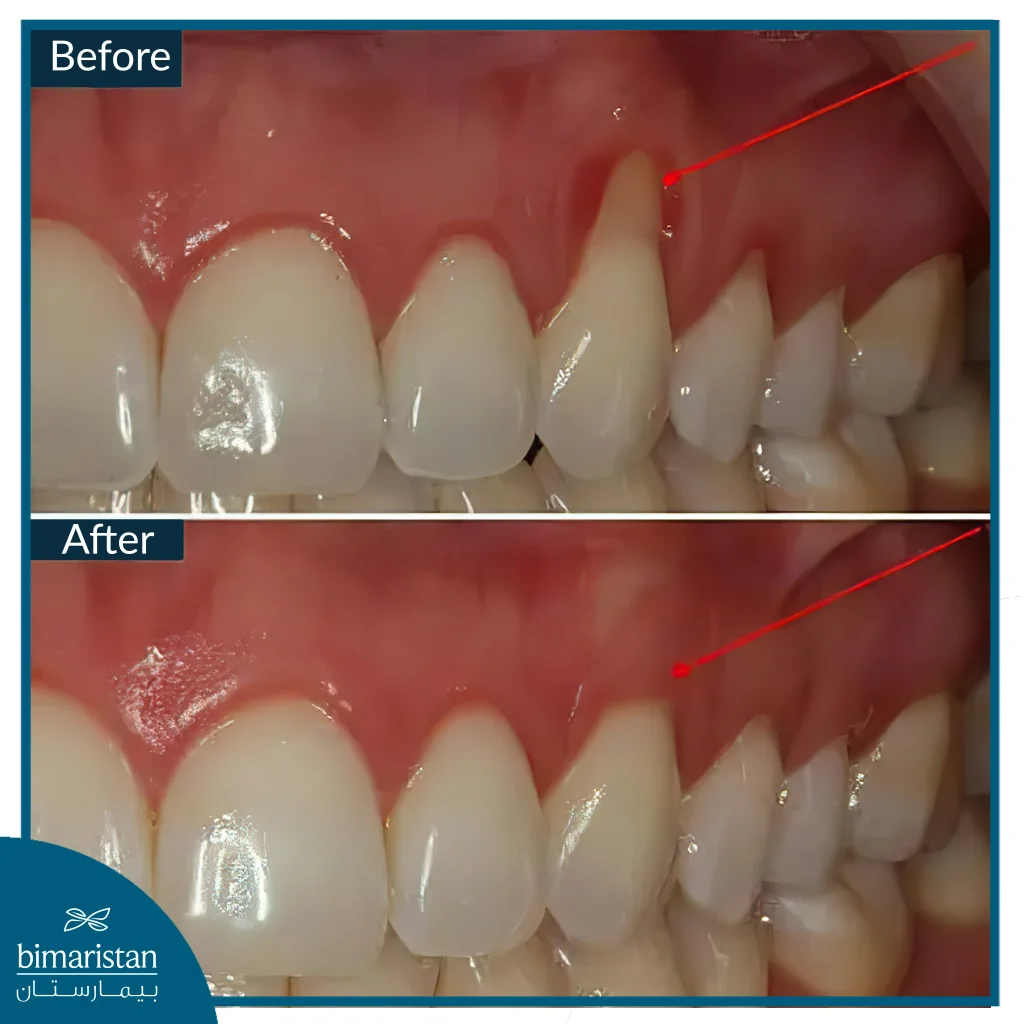
Bone grafts
When the bone surrounding the tooth’s root is damaged or destroyed, a person may need to have a bone graft placed. This procedure involves replacing the damaged bone with new bone, either from the person’s own, artificial, or donated bone.
The goal of placing bone grafts is to hold the tooth in place and help the tissue grow back.
GTR-guided tissue regeneration
The dental surgeon places a small mesh-like membrane between the person’s bones and gum tissue in this procedure. This material prevents the gum from growing into the space where the bone should fill, allowing the bone and connective tissue to regrow.
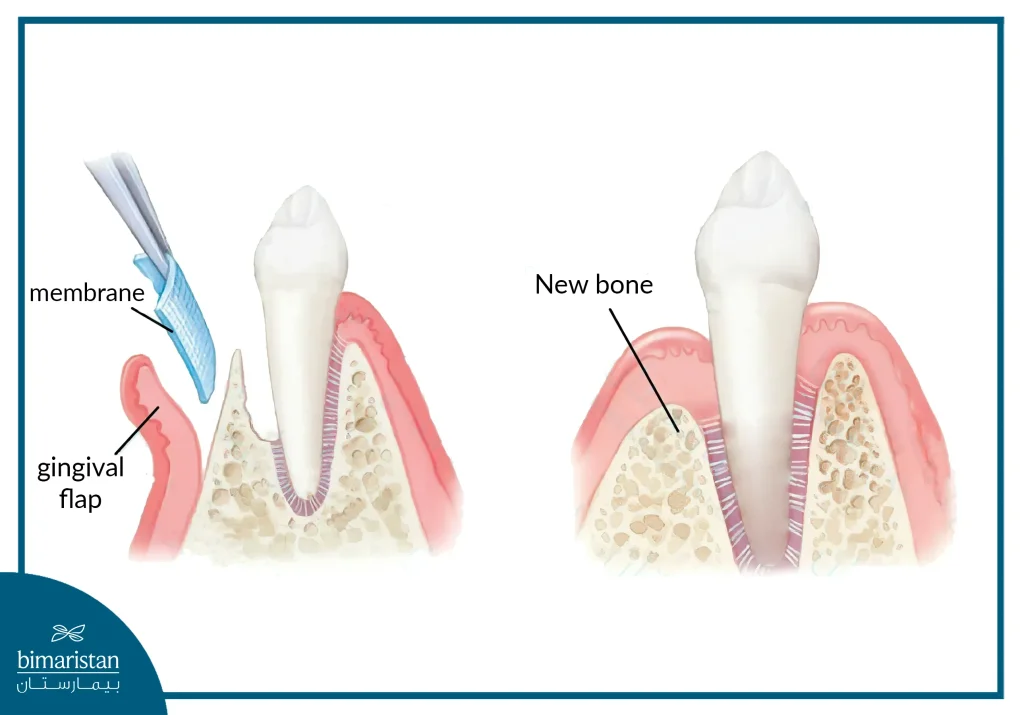
Soft tissue grafts
In some cases of gum recession due to loss of gum tissue, we may need to use a gum graft or gum transplant with soft tissue grafts to minimize the risk of further damage.
During this procedure, a periodontist typically removes tissue from a specific part of the body, usually the roof of the mouth, and repositions it as a tissue graft in the area where the gums have receded. The tissue graft covers any exposed roots and minimizes the risk of further damage.
Studies have shown that this technique has little to no aesthetic difference from guided tissue regeneration when treating receding gums.
Puncture surgery technique
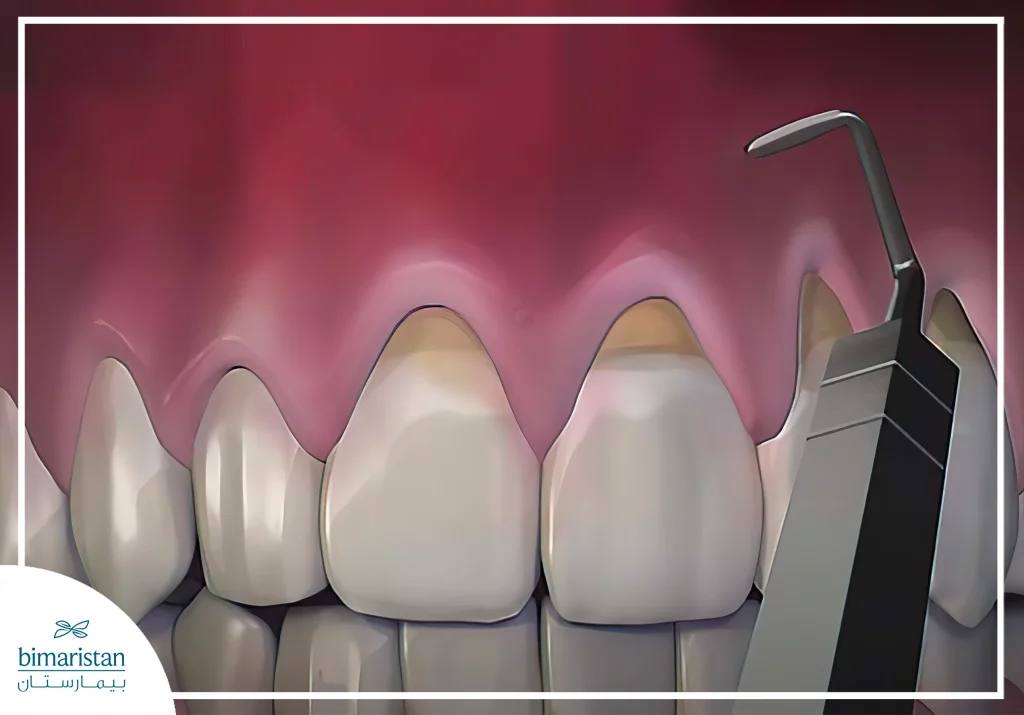
Pinhole surgical technique (PST) is a relatively new treatment that has proven effective in treating mild to moderate gum recession. It is a minimally invasive procedure that involves making a small hole in the gum tissue above the exposed tooth root and then inserting a special instrument into the hole to separate the gum from the tooth. After that, the doctor stretches the gum, repositions it over the exposed tooth root, and covers it completely.
Other treatment options include:
Laser and gum surgery
Although there is no current evidence to support laser gum treatment fully, some dentists use it to reduce the size of pockets and restore damaged connective tissue.
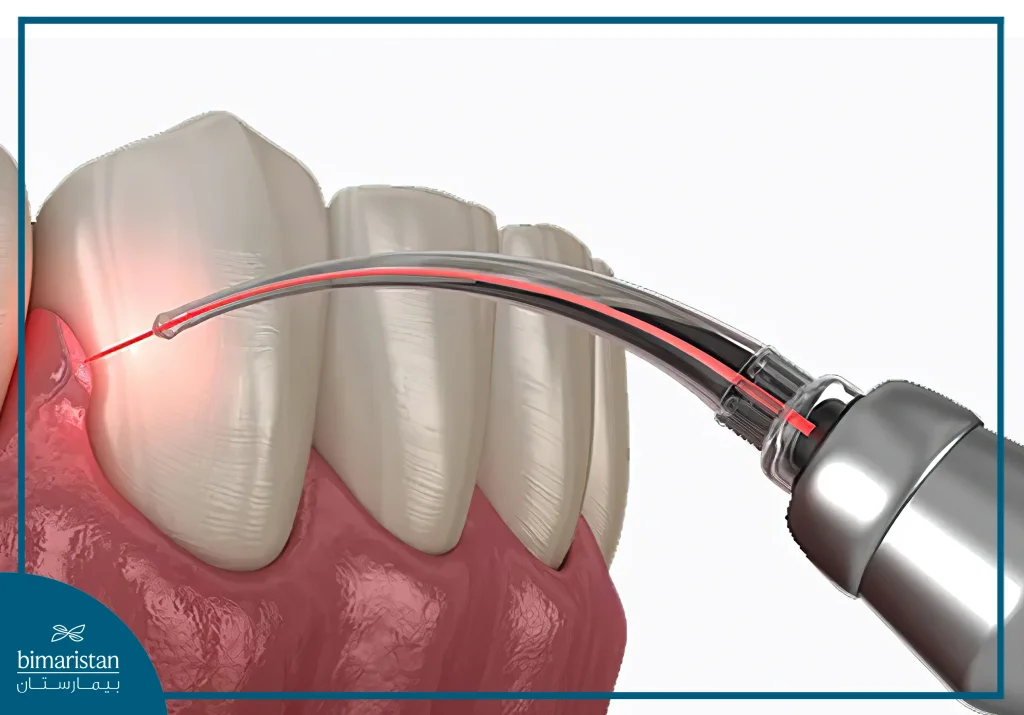
Tissue-stimulating proteins
This procedure involves using a protein-based gel to stimulate bone and tissue growth.
Preparing for gum surgery
Before a person undergoes gum surgery, the dentist performs a pre-surgical examination to make sure the surgery is safe.
During this test, your dentist will likely do the following:
- Conducting a medical history and labs
- Checking the teeth, mouth, and jaw for stability and health
- Check for any infections, abscesses, or other lesions that could complicate recovery from surgery
- Discuss the risks and benefits of the procedure and obtain authorization and consent to proceed with the surgery
What happens during gum surgery
This varies depending on the type of procedure, but in general, most gum surgery procedures take about two hours to complete.
In some cases, the surgery requires the person to be under full general anesthesia during the procedure, and in other cases where only a local anesthetic is used to numb the gums, injecting the numbing medication can be somewhat uncomfortable.
During surgery, the dental surgeon uses sterile equipment, including instruments and braces, to minimize the risk of infection.
Gingivectomy is performed by making small surgical incisions along the gum line and then lifting the gums away from the teeth. This allows the doctor to see the roots better and remove and clean any tartar, plaque, or infection.
After this deep cleaning, the dental surgeon can perform other procedures, such as gum reshaping, bone regeneration, or other planned procedures.
Once the planned dental surgery is complete, the surgeon will sew the gum back into place using fine-thread stitches that are removed 7 to 10 days after surgery.
Recently, Turkey has become one of the leading countries in the field of medical tourism. We guide you to the best expert specialists in all departments. Do not hesitate to contact us at your family’s Bimaristan Center in Turkey.
Recovering from gum surgery
After any dental procedure, your dentist will provide detailed instructions on how to achieve the best possible recovery. The length of the recovery period depends on the type of surgical procedure performed.
Typically, people need pain medication in the days following gum surgery, and the dentist will discuss any recommended medications with the patient before they leave the clinic or surgical center.
Dentists may also recommend the following:
- Use an antiseptic mouthwash to keep the area clean and avoid infection
- Avoid strenuous exercise
- Eating soft foods in the days following surgery
- Avoid smoking
The dentist will schedule a follow-up appointment in one to two weeks, during which time the surgeon will check the healing of the gums and remove any stitches.
After surgery, you will see and feel your gums differently. Your gums will heal, and your teeth will be stronger and firmer. Some people may experience tooth sensitivity to hot or cold temperatures and find relief by using desensitizing toothpaste.
Complications of gum surgery
Complications of gum surgery are few and uncommon. However, some people may experience the following:
- Bleeding gums
- Swollen gums
- A feeling of loose teeth (should only be temporary)
- Tooth sensitivity
- Gaps between teeth
- Sepsis
In graft surgeries, the graft tissue may not be properly attached to the graft site. This is very rare, but if it happens, the person may need to repeat the surgery.
Some people don’t like the look of their gums after gum grafting or implant surgery. In these cases, a periodontist may be able to reshape the gums to help change their appearance.
Remember, be careful!
If left untreated, gum disease can lead to the development of a variety of health issues, such as cardiovascular disease, diabetes, and premature birth of low-weight babies.
Gum disease can also become a serious health condition that affects the teeth, gums, and bones. It can lead to infection and death of bone and tissue, which may require extensive surgery to repair and treat.
Minimizing risk factors, maintaining good oral hygiene, and keeping routine dental appointments can reduce the risk and severity of gum disease.
Sources
